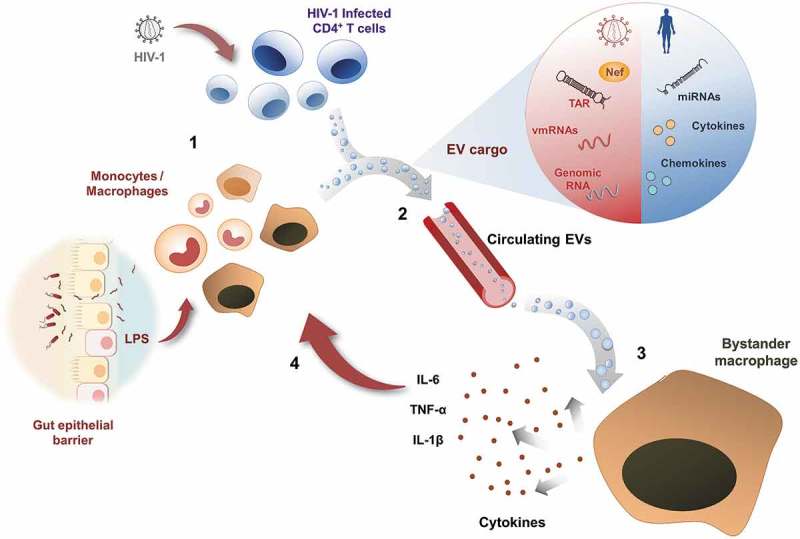Figure 1.

Model of chronic inflammation enhanced by extracellular vesicles.
HIV replication or expression of viral components in latently infected cells, in conjunction with bacterial PAMPs released into circulation as a consequence of microbial translocation in the gut, constitute a persistent activating stimuli for immune cells such as T lymphocytes, monocytes and macrophages [1]. These activated cells release into circulation EVs containing pro-inflammatory molecules from the host or HIV-derived PAMPs (as detailed in the enlarged vesicle) [2]. Macrophages exposed to circulating EVs become activated and release inflammatory cytokines [3], which in turn contribute to a positive loop of systemic chronic inflammation [4].
